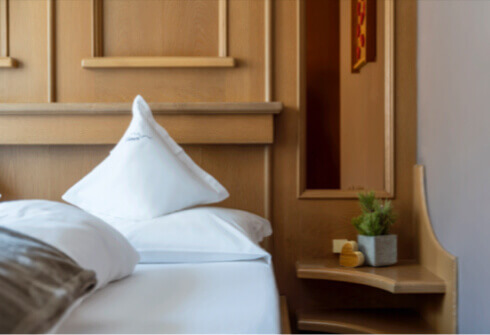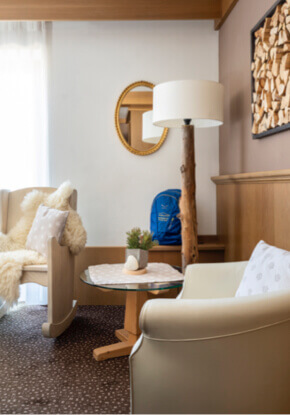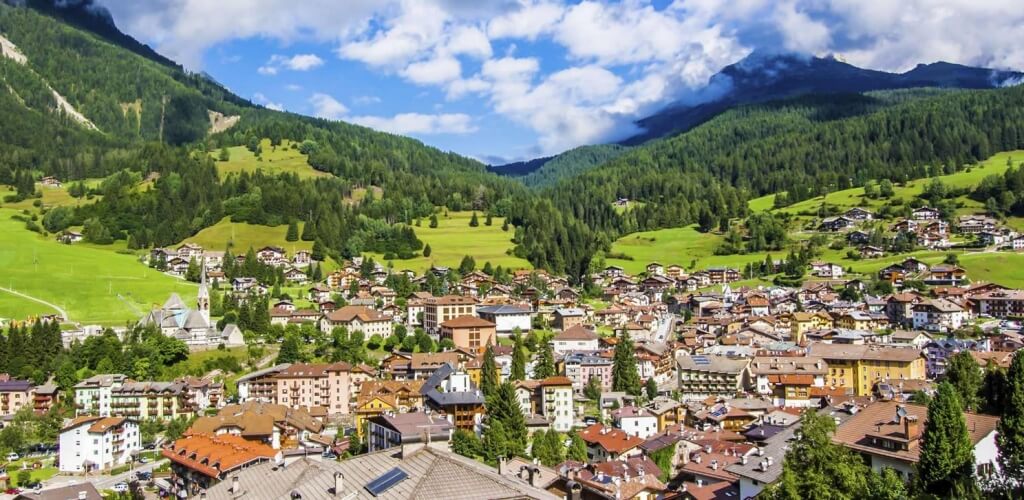Tel: +39 0462 764209
Email: info@hotelcatinaccio.com



A dream called Moena
Pearl of the Val di Fassa and its main center, Moena represents, without a shadow of a doubt, the ideal destination for all those tourists who want to combine pristine landscapes and full of first-rate beauties to combine unparalleled tranquility, the silence that differs, albeit momentarily, from the uninterrupted rhythms of everyday life and boring routine.

A show, that of the landscapes that surround this slice of Trentino, made even more beautiful by the mountain massif of the Dolomites, recently declared a UNESCO World Heritage Site. Not to mention a gastronomic tradition of the Val di Fassa, which has been able to skilfully travel a millennial time, with traditions that have been jealously handed down from generation to generation. Moena, gradually but steadily, is gradually becoming a destination for ski lovers who will find refreshment here on slopes that are always snow-covered and with every necessary service.
Ideal location for an unforgettable holiday
Gently lying along the surface of an alluvial basin, Moena surmounts an altitude between 1094 and 2823 meters above sea level. Moena’s best dress is given by an intrinsic elegance, which manifests itself in all its beauty not only owned to the traditional features of a country with pure mountain traction but also and above all and because of a unique frame of its kind, designed and embellished with streets and alleys meticulously maintained. This is not a negligible aspect which, combined with other factors of the same importance, has allowed Moena to receive the recognition, as prestigious as an exclusive epithet of Perla Alpina, the objective is to reward the Alpine resorts which, for the characteristics and services offered, are more attentive to offering sustainable and qualitatively valid tourism, turning a careful and thorough look at respect for the environment which cannot be a particular of secondary and fantastic importance. Contrary to what one might mistakenly believe, Moena is a municipality that allows itself to be contemplated and visited not only in the winter season but also in the summer, with an almost unchanged charm. If it is true that its ski facilities are all that a snow lover could wish for, it is equally true that the possibilities are not lacking even in the hottest seasons, with optional activities ranging from climbing to hiking in nature up to itineraries specially designed to encourage long and exciting mountain bike adventures.
Background
According to what some current agreements of thought affirm, the name of Moena would in all probability be attributable to the terms moena and molena frequently used in the Venetian and Ladin dialectal idioms. These terms could be translated into the Italian language in the form of a crumb which in turn could intuitively be traced back to a marshy matrix soil with anything but leathery consistency. The first historiographical references to Moena are to be sought far back in time, even reaching the first century after the birth of Christ. Going further into detail, the first mention ever is from 1164, the year in which the Church of San Virgilio was consecrated by the Bishop Adelpreto. In contrast to this thesis, fully confirmed by numerous inscriptions brought to light, there is another which seems to travel in the opposite direction. According to what the latter claims, more a legend than a real thesis, it seems that Moena belonged, before the temporal reference just mentioned, to the diocese of Bressanone. However, there is no document that can prove all of this. About two centuries later, at the dawn of the fourteenth century, Moena was merged with the Magnifica Comunità di Fiemme, a district controlled by the Episcopal Principality of Trento and by the German Confederation. Following the long and not without adversity process of secularization experienced by the Principality in the year 1905, Moena became part of the Kingdom of Bavaria, remaining there for only 5 years, until 1810, before passing first to the Kingdom of Italy and then under the aegis of the Austrian Empire, disintegrated following the defeat of the First World War. In 1854, the first music band of Moena was created, in 1879 instead marked the foundation of the first accommodation facility in the center, today geographically located in the province of Trento. During the bloody battles of the First World War, the front of the San Pellegrino Pass became in spite of itself the backdrop of bloody battles. Subject to occupation by the troops of the Kingdom of Italy in 1918, Moena was officially annexed to the latter three years later, in 1921. To this day, the emblem of Moena is composed of a boatman who, using a very long rod, starts pushing his boat from the night towards the day.
What to see
A possible itinerary could only start from the archpriest of San Virgilio. A site we are talking about that almost like a caring father dominates the whole inhabited center, protecting it and supervising the whole valley below. Its consecration, as was previously mentioned, took place in the year of 1164. The structure that makes up such an ecclesiastical building has undergone continuous processes of adaptation over the years and centuries. One of these, the first, was put in place in 1533, with a Gothic style that significantly changed its original features. Tangible evidence of the intervention in question can be found in the vault of the presbytery, which bears the inscription certifying the year 1533. It took about three centuries to see the second intervention, consisting of the rearrangement of the presbytery in favor of the Cappella del Carmine. To try to cope with incessant population growth, in the nineteenth century the archpriest church of San Virgilio was enlarged. The current appearance and conformation are because of the last intervention in chronological order, the one completed in 1929, and which main objective was the preservation of the Gothic tract and the primitive apse. The interior of the church, as well as having three naves, houses liberty style frescoes made by Carlo Donati. On the left wall, there is a fresco painting by the parish priest Giovanni Iori, while on the right there is a wooden crucifix produced by Cirillo Dell’Antonio, an artist famous for his outstanding versatility and flair. The windows, together with the wooden panels of the portals are also the fruit of his genius.
After completing what is a necessary visit to the Church of San Virgilio, the time has now come to travel the second stage of this tour: the church of San Volfango. The distance from the archpriest church of San Virgilio is very small, constructed above the remains of an ancient pagan temple. The precise era of its construction is still unknown, contrary to frescoes that can be dated to the fifteenth century. The third and final stage is Fort Someda, a fortification which, as the name easily recalls, can be found in the analogous hamlet. Belonging to an intricate complex of fortifications wanted by the Austro-Hungarian rulers, Fort Someda was born in 1898.
Wards and traditions
Moena is made up of a far from a reduced number of wards, which can be summarized as follows: Cianton Tibaut, Salejada, Sotegrava Ciajeole Ramon, Longiarif, Ischiacia, and Turkey. Regarding the Turkey district, the name is traced back to the presence of a Turkish soldier who arrived here following the Ottoman defeat of Vienna. However, it is a legend, partially scaled down by another theory, according to which Turkey arises from the presence in the past of multiple presses. Despite this second concept, certainly more likely and credible, the inhabitants of Moena show massive doses of pride towards the first legend, to the point of organizing until a few years ago a singular parade in traditional Turkish costumes, on the occasion of the festivities dedicated to Carnival. In winter, the same district becomes the setting for the Cribs of the Turks, an exhibition in which handcrafted representations of the nativity are set up along the entire facade of the district. This is an opportunity to take advantage of to experience firsthand the timeless traditions of a place that seems to come out of a fairy tale. The main road that runs through Moena is certainly Strada Riccardo, surrounded on the right and left by shops and boutiques of all kinds and sizes. It was dedicated to an engineer of Austrian origin who in the First World War made it possible to avoid many young people from incurring a safe death in the war front.
How to travel to Moena
Given the functional communication routes, reaching Moena is very simple. The first option is to take the 8 highway 48 of the Dolomites. Alternatively, you can take the state road 346, which runs from Belluno to the San Pellegrino pass. Travelers who decide to opt for the train can instead get off at the nearby station of Ora, while those traveling by plane can fly to Bolzano or Verona.
Sign up for our
newsletter!
